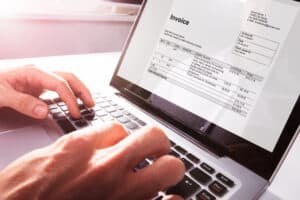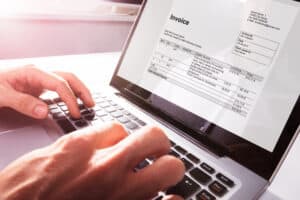
The COVID-19 pandemic has left many self-employed individuals struggling to keep on top of all areas of their business, from new health and safety procedures to completing basic admin tasks.
With these additional burdens, it’s no surprise that occasional mistakes can start to creep into invoicing documents.
Twyla Verhelst, Head of FreshBooks Accountant Channel at leading online accounting software provider, FreshBooks, reveals the most common invoicing mistakes the self-employed have made since the start of the COVID-19 pandemic.
1. Your Invoices Do Not Include Payment Due Dates
Without specific payment dates on invoices, many of those who are self-employed may unintentionally send out “open invoices”. If there’s not a definitive payment timeframe, invoices are at risk of being ignored or forgotten about. Add in the use of vague language or jargon and this can potentially lead to confusion over the specified payment date.
Verhelst advises, “If you want to prevent confusion on your invoices, avoid unclear terminology such as, ‘NET 30’, or ‘Payment due within X number of days’. These can be interpreted differently, leaving many clients scratching their heads!
Make the payment date clear at the top of the invoice, as this way you’ll remove any confusion that could have unwittingly increased the amount of time it takes for you to get paid.”
2. You Haven’t Made It Easy to Pay
When it comes to invoicing, there’s one glaring omission that is easily forgotten: how to pay.
Verhelst states: “Failing to include how to pay information, whether it be by online payment or a bank transfer, can make paying you on time cumbersome. Even clients or customers who want to pay you, but don’t know how to, are likely to put off reaching out to you for clarity, thus further delaying your payment.”
3. You Haven’t Itemised Your Invoice
Since the start of the pandemic back in 2020, you may have found that more customers than ever before are expecting fully itemised invoices, not just for their own accounts, but to help monitor their personal costs.
Verhelst reveals: “When you’re self-employed, time is precious. So, instead of painstakingly tailoring all your invoices to each client, get into the habit of itemising all your invoices as standard.
This approach will help you get paid faster and will also help reduce the likelihood of there being payment discrepancies.”
4. Your Invoice Isn’t Courteous
Did you know that being courteous on your invoices can help you get paid faster? Believe it or not, invoices that come across as impolite or discourteous are more likely to be put aside for “another day”.
Verhelst adds: “A simple addition of ‘thank you for your business’ or even a ‘please’ on your invoice can prompt your customer or client to pay their bill more efficiently.”
5. Your Invoices Have Hidden or Unexpected Fees
Hidden costs on an invoice can give your customers a nasty, unwanted surprise. Moreover, businesses who add hidden fees to their invoices can lose trade as a result.
To avoid these potential problems, go through all the costs with your client before you invoice them. This will demonstrate integrity and transparency on your part, as well as helping to avoid any future disputes over the payment amount.
Verhelst concludes: “Invoicing is a critical procedure for all businesses, as any delays can cause issues with suppliers and ultimately affect the cash flow of the business. This is especially important during the pandemic when every payment is key.
Having a clear, streamlined invoicing process will transform your admin processes, so you can then follow the same procedure every time. It’s useful to get invoicing software in place as this will help to quicken the payment process and help relieve any unnecessary stress. It will also provide suppliers with a document that is easy to follow, helping them to pay invoices faster.”
